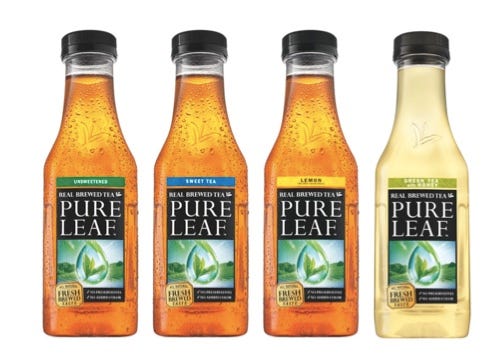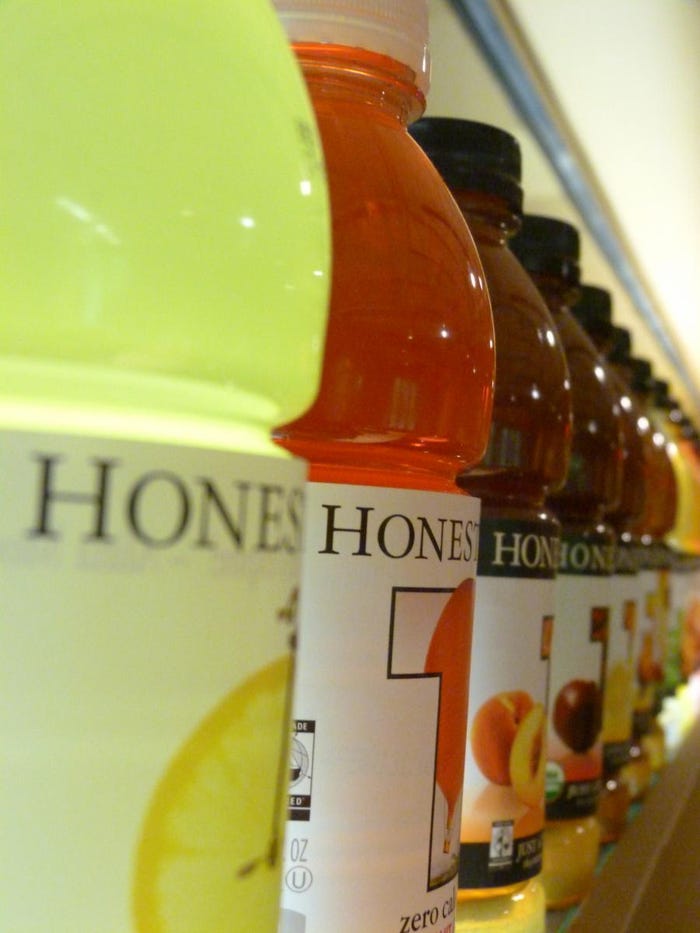PET bottles are brewing up a niche in the ready-to-drink tea industry. Several companies are switching from glass to PET for several factors ranging from recyclability to its lightweight properties. Pure Leaf Iced Tea, a product of the Pepsi Lipton Tea partnership, recently introduced its new square-shaped bottles that are made of PET plastic. A company spokesperson told PlasticsToday Pure Leaf believed the new packaging is the best fit for the brand and their consumers.
June 1, 2012
PET bottles are brewing up a niche in the ready-to-drink tea industry. Several companies are switching from glass to PET for several factors ranging from recyclability to its lightweight properties.
Pure Leaf Iced Tea, a product of the Pepsi Lipton Tea partnership, recently introduced its new square-shaped bottles that are made of PET plastic. A company spokesperson told PlasticsToday Pure Leaf believed the new packaging is the best fit for the brand and their consumers.
"Pure Leaf is transitioning from glass to PET in order to provide the consumer with an un-breakable, consumer preferred package format for releasing their new square bottles made of PET plastic," the spokesperson said. "Pure Leaf wanted packaging that was recyclable as well as consumer-friendly for on-the-go and out-of-home occasions."
 The new square bottles fit together in a condensed way, creating high pallet efficiency, which equates to more bottles, lighter loads and less fuel used in transport, according to the company. The new PET package is significantly lighter than the original glass container.
The new square bottles fit together in a condensed way, creating high pallet efficiency, which equates to more bottles, lighter loads and less fuel used in transport, according to the company. The new PET package is significantly lighter than the original glass container.
"Additionally, because the bottle is square we are able to increase cube efficiency on our pallets and trucks by 22%, reducing the number of trucks needed to distribute our product," the spokesperson said.
Pure Leaf is now available in 18.5oz single-serve bottles and a new 59oz multi-serve carafe.
The spokesperson said consumers have been supportive in the company's change to PET packaging.
"We have been very vocal in communicating why we switched to PET plastic, and the benefits of doing so," the spokesperson said. "We hope our consumers recognize that, and do their part to help by recycling the bottles."
Often marketed as a healthier choice over soda, the ready-to-drink tea market continues to see growth and is forecasted to gain share and increase in volume to 3.5 billion gallons in the U.S. by 2015, according to Beverage Marketing Corp.
Bottoms up
Seth Goldman, co-founder of Honest Tea, which is part of the Coca-Cola family of products, said in the first few years of business the company served its tea only in glass bottles. However, after a few broken glass incidents, the company began to consider other alternatives.
"We looked at the glass footprint versus plastic, and we recognized the environmental merit to plastics," he said. "You must have packaging be as efficient as possible." 
The company began to offer its products in both glass and PET, but adding plastic to its packaging portfolio didn't come without headaches.
Honest Tea wanted its PET bottles to be a lightweight, but this ran the risk of dented bottles. To help the bottles keep its shape, the inside must be under pressure. The thinner plastic meant the company needed more pressure and so it was produced with a deeper cavity underneath the bottles.
However, the dome-shaped cavity at the bottom of the bottles caused some consumers to question the actual amount of liquid inside each bottle.
"We had a large cavity underneath the bottle, and while the bottles featured the same amount of product as before, some consumers thought they were being deceived," Goldman said. "We had to do some damage control."
Honest Tea added messaging on its PET bottles to explain how much liquid was in it, and the company also worked with its supplier Graham Packaging Co. to develop a bottle without the dome cavity.
The new PET line of bottles is lightweight but feature a flatter bottom.
Goldman said the new bottle actually provides several advantages. For example, the old mold with the cavity required an activator machine in the bottling plants that was expensive, he said. Now the company can run this new bottle at multiple sites and it doesn't require an activator.
Honest Tea still offers its products in both glass and plastic bottles. Goldman said glass equates to about 66% liquid and 34% package, while the plastic bottles are about 92% liquid and 8% package.
"As you can see from that perspective plastic has a big advantage over glass," he said. "Plastic has become the fastest growing part of our business, and continues to be a growth engine."
About the Author(s)
You May Also Like


